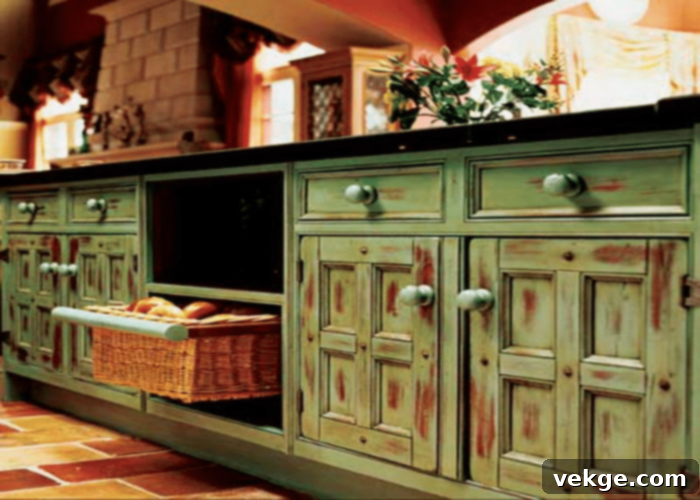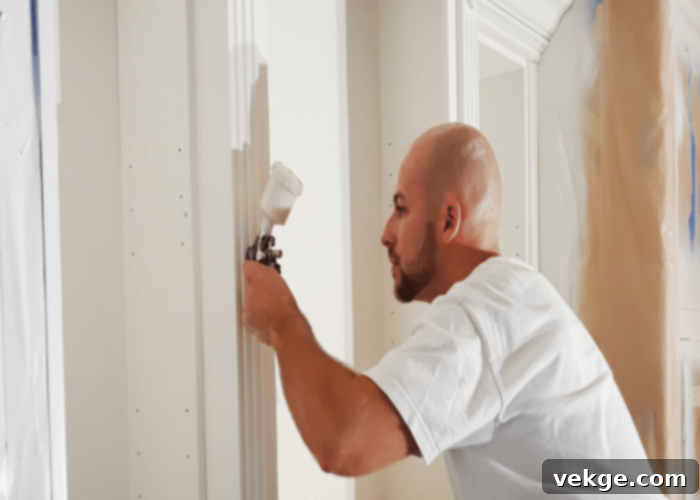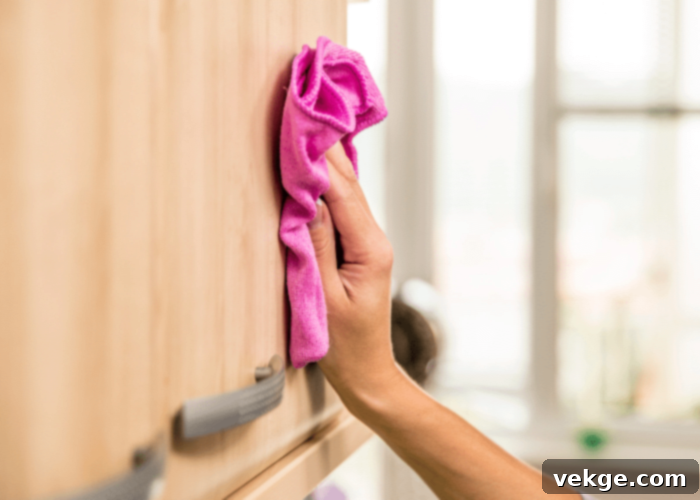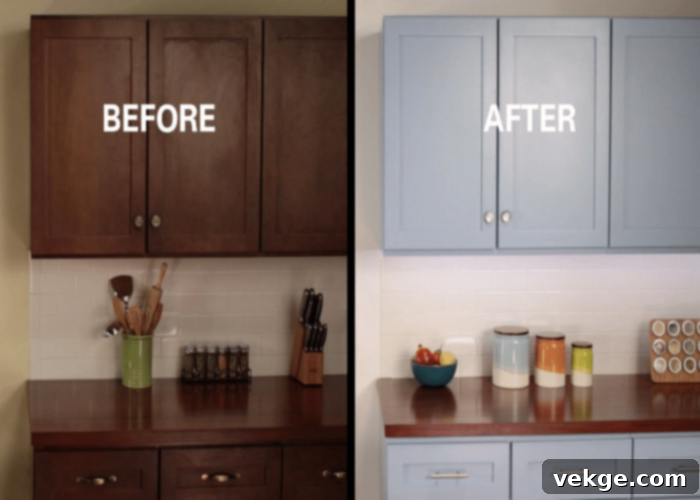How Long Does Cabinet Paint Last? Maximizing Durability for a Flawless Finish
Cabinets are often the unsung heroes of our homes, providing essential storage and organization that helps maintain a tidy and functional living space. However, when cabinets begin to show signs of wear and tear – chips, fading, or outdated colors – they can significantly detract from the overall aesthetic of a room. Rather than embarking on the costly and time-consuming endeavor of full cabinet replacement, an increasingly popular and highly effective solution is cabinet painting. This simple yet transformative process offers a fresh, revitalized look without breaking the bank or enduring a lengthy renovation.
The allure of painting cabinets stems from several key benefits. Firstly, it’s remarkably accessible, with many high-quality paints and tools available for both DIY enthusiasts and professional painters. Secondly, painted cabinets, when done correctly, offer exceptional durability, standing up to the daily rigors of family life. Most importantly, it’s a significantly more cost-effective and environmentally friendly alternative to replacing entire cabinet units. With the right approach, the best cabinet paints can give your home an instant, elegant makeover.
While the benefits are clear, a common question arises for homeowners considering this option: “How long does cabinet paint last?” After all, no one wants to invest time and effort into a project only to have it chip or fade prematurely. Understanding the expected lifespan of painted cabinets, and the critical factors that influence their longevity, is crucial for ensuring a lasting and beautiful finish. This article delves deep into the durability of cabinet paints, providing insights and practical advice to help you achieve the best possible results.
Understanding the Lifespan: How Long Does the Best Cabinet Paint Really Last?

When you choose to paint your cabinets, you’re looking for a finish that not only looks fantastic but also withstands the test of time. So, are the best cabinet paints truly durable? And if so, what kind of lifespan can you realistically expect?
Generally speaking, a professionally applied, high-quality cabinet paint job can last anywhere from 8 to 15 years, and in some ideal conditions, even longer. This range accounts for various factors that can significantly impact durability. It’s not just about the paint itself, but a comprehensive interplay of the type of paint used, the application technique, the quality of tools, the preparation of the cabinet surface, and even the daily usage and maintenance of the cabinets. A superior finish isn’t achieved by luck; it’s the result of meticulous planning and execution.
By carefully considering and optimizing each of these elements during the painting process, you can dramatically extend the life of your painted cabinets, ensuring they retain their fresh, new appearance for many years to come.
Critical Factors Affecting Cabinet Paint Durability and Longevity
While an average lifespan of 8 to 10 years is a good benchmark for cabinet paint, this figure can be significantly influenced by a variety of factors. Understanding these elements is key to ensuring your painted cabinets not only look great immediately but also maintain their pristine condition for as long as possible. Let’s explore the crucial factors that can either enhance or diminish the durability of your cabinet paint.
1. Professionalism and Expertise in Application

When it comes to cabinet painting, experience and professionalism are paramount. A well-executed paint job requires a deep understanding of various painting processes, material properties, and attention to detail. If you possess the necessary skills, knowledge, and patience, a DIY approach can be rewarding. However, for many, hiring a professional cabinet painter is a worthwhile investment.
Professional painters are not just skilled with a brush; they understand surface preparation intricacies, paint adhesion properties, proper ventilation, and efficient application techniques (whether brushing, rolling, or spraying) to achieve a factory-like finish. They are trained to avoid common pitfalls such as uneven coats, drips, brush marks, and inadequate drying times, all of which can compromise the durability and aesthetic appeal of the final product. Mistakes made during the painting process, especially with adhesion or curing, can lead to premature chipping, peeling, or fading, drastically shortening the paint’s lifespan and diminishing the entire look of your kitchen or bathroom.
2. Quality of Tools and Materials Employed

Even with the most skilled professional, compromising on the quality of tools and materials used in the painting process can significantly impact the paint’s durability. High-quality paints, primers, brushes, rollers, and sprayers are designed to work together to create a robust and lasting finish. Using subpar items can lead to a less uniform application, poor adhesion, and a finish that is more susceptible to wear and tear.
Investing in the right tools, such as fine-bristle brushes for intricate details, smooth foam rollers for flat surfaces, or a quality paint sprayer for an ultra-smooth finish, ensures that the paint is applied correctly and evenly. Furthermore, selecting the best cabinet paint – typically a high-quality acrylic-latex hybrid or alkyd enamel – along with appropriate primers and topcoats, is non-negotiable for achieving maximum durability. These specialized paints are formulated to resist chipping, scuffing, and moisture, making them ideal for high-traffic areas like kitchens and bathrooms.
3. Meticulous Preparation Before Paint Application

Perhaps the most critical factor influencing the longevity of cabinet paint is the thoroughness of surface preparation. Skipping or rushing these crucial steps, regardless of the quality of paint or skill of the applicator, will almost certainly lead to premature failure of the paint job. Preparation is not merely a suggestion; it’s the foundation upon which all durable paint finishes are built.
The essential steps in proper cabinet preparation include:
- Cleaning: Cabinets, especially in kitchens, accumulate grease, grime, and dirt. A thorough cleaning with a degreaser (like this one) is vital to ensure the paint has a clean surface to adhere to. Any residual contaminants will prevent proper bonding.
- Sanding: Lightly sanding the surface (with a sanding sponge or fine-grit sandpaper, typically 180-220 grit) creates a “tooth” for the primer and paint to grip. This step dulls the existing finish and roughs up the surface microscopically, significantly improving adhesion. It’s not about stripping the old finish but about creating a bondable surface.
- Repairing Imperfections: Fill any dents, dings, or holes with wood filler, then sand smooth. A smooth, even surface ensures a uniform paint application and finish.
- Priming: Applying a high-quality bonding primer (such as INSL-X Stix Acrylic Waterborne Bonding Primer) is non-negotiable. Primer creates an ideal surface for the paint to adhere to, blocks stains, and ensures color uniformity. It’s particularly important for glossy or difficult-to-adhere surfaces like laminate or previously lacquered wood.
- Second Sanding (Optional but Recommended): A light sanding after the primer dries can smooth out any minor imperfections, leading to an even smoother topcoat.
- Dust Removal: After each sanding step, thoroughly remove all dust using a vacuum, tack cloth, or damp cloth to prevent specks from embedding in the wet paint.
Skipping any of these steps is a shortcut to disappointment and a short-lived paint job.
4. Location and Usage of the Cabinetry

The environment in which your cabinets reside significantly impacts their paint’s longevity. Cabinets in low-traffic, low-moisture areas, such as a laundry room or a home office, are likely to see their paint last for the upper end of the estimated lifespan, possibly even longer. They face minimal physical abuse, less exposure to contaminants, and stable environmental conditions.
Conversely, cabinets in high-traffic, high-humidity areas like kitchens and bathrooms are subjected to constant challenges. In kitchens, paint faces daily exposure to:
- Grease and Oil: Splatters from cooking can adhere to surfaces, requiring frequent cleaning.
- Moisture and Steam: From cooking and dishwashing, which can penetrate paint and primer layers if not properly sealed.
- Temperature Fluctuations: Especially near ovens and stovetops.
- Physical Impact: Bumps from pots, pans, and daily use, leading to chips and scuffs.
- Frequent Touching: Fingerprints and hand oils can degrade the finish over time.
For these demanding environments, choosing paints with higher durability ratings and incorporating a clear protective topcoat (like a polycrylic) can further extend the life of your cabinet paint. Regular, gentle cleaning also plays a vital role in preserving the finish.
5. Type and Quality of Paint Used
Not all paints are created equal, especially when it comes to cabinet applications. The specific type and quality of paint you choose will have a profound effect on its durability. For cabinets, durable, hard-wearing finishes are essential. Popular choices include:
- Acrylic-Latex Enamels: These are water-based, easy to clean up, and dry quickly. Modern formulations, often labeled as “cabinet paint,” “trim paint,” or “door paint,” offer excellent hardness and adhesion, making them highly durable. They are less prone to yellowing over time compared to oil-based paints.
- Alkyd (Oil-Based) Paints: Known for their superior hardness, smooth finish, and excellent durability. However, they have a longer drying time, strong odors, and clean-up requires mineral spirits. They can also yellow over time, especially in areas not exposed to sunlight.
- Hybrid Enamels (Waterborne Alkyds): These combine the best features of both, offering the durability and smooth finish of alkyds with the easy cleanup and lower VOCs of water-based paints. They dry hard and are highly resistant to chipping.
- Epoxy-Based Paints: While extremely durable, they are typically used for industrial applications due to their toxicity and complex application process, less common for residential cabinets.
Opting for a premium brand specifically formulated for cabinets, rather than a general wall paint, will always yield superior results in terms of adhesion, hardness, and resistance to wear.
6. Ongoing Maintenance and Care
Even the most durable cabinet paint needs proper care to last. Regular, gentle cleaning with a mild soap and water solution can prevent the buildup of grease and grime that could otherwise degrade the finish. Avoid abrasive cleaners, harsh chemicals, or scouring pads, as these can strip the protective layer, dull the sheen, or even remove the paint itself. Promptly wiping up spills, especially acidic ones, also helps prevent staining or etching of the painted surface. A little routine maintenance goes a long way in preserving the fresh look and extending the life of your painted cabinets.
Why Choose to Paint Your Cabinets? Beyond Just Durability

Having explored the longevity of cabinet paints and the factors that contribute to their durability, it’s clear that painting is a viable and lasting solution. But beyond mere survival, why is cabinet painting so highly recommended? The benefits extend far beyond a simple repair, offering transformative effects for your home.
1. An Instant and Affordable Home Makeover
Cabinets are dominant visual elements in any room, particularly in kitchens and bathrooms. When they become worn, dated, or simply no longer align with your style, they can drag down the entire decor. A complete renovation or cabinet replacement can be a monumental undertaking, often costing tens of thousands of dollars and involving weeks of disruption.
In contrast, painting your existing cabinets provides an astonishingly quick and powerful makeover. A fresh coat of paint in a contemporary color can instantly brighten a space, make it feel larger, and completely modernize an outdated aesthetic. You can choose a color that perfectly complements your current decor or one that completely transforms the vibe of the room, creating a new focal point without major structural changes. It’s an effective way to achieve a high-impact design upgrade for a fraction of the cost of replacement.
2. Incredibly Cost-Effective and Highly Accessible
The desire for a beautiful, updated home is universal, but the associated costs can often be daunting. Cabinet painting stands out as one of the most budget-friendly ways to achieve a significant aesthetic boost. While new custom cabinets can cost upwards of $20,000 to $50,000+, and even stock cabinets can be several thousands, painting typically ranges from a few hundred dollars for a DIY project to a few thousand for a professional job. This massive cost difference makes it an incredibly attractive option for homeowners looking for value.
Furthermore, the tools and materials needed for cabinet painting are readily available at any hardware store. Essential items like rollers, brushes, screwdrivers (for hardware removal), primers, and the paint itself are easily sourced, making it an accessible project for almost anyone. The relatively low barrier to entry, combined with the substantial savings, makes cabinet painting a smart financial decision.
3. Fast, Efficient, and Environmentally Friendly
Consider the logistical nightmare of a full kitchen or bathroom renovation: demolition, new cabinet installation, countertop replacement, plumbing, electrical work, and weeks or even months of living in a construction zone. It’s a tiring, expensive, and protracted process.
Cabinet painting, on the other hand, offers efficient and desirable results in a comparatively short timeframe. A professional team can often complete a kitchen cabinet repaint in 3-7 days, depending on the size and complexity. For a DIYer, it might take a few weekends. The disruption to your daily life is minimal, and the visual impact is immediate and dramatic. Old, rusty, or chipped appearances vanish, replaced by a smooth, contemporary finish that makes the cabinets look brand new and meticulously maintained.
Additionally, painting existing cabinets is an environmentally conscious choice. It reduces landfill waste by preventing perfectly functional cabinet boxes from being discarded. By reusing and revitalizing what you already have, you contribute to a more sustainable approach to home improvement.
Conclusion: Investing in Quality for Lasting Cabinet Beauty
Whether your goal is to breathe new life into an outdated kitchen, repair tired and chipped cabinet finishes, or simply refresh your home’s aesthetic, painting your cabinets offers an ideal and highly effective solution. The “best cabinet paints,” when applied correctly, promise not just a visual upgrade but also impressive durability and longevity, capable of looking fantastic for 8-15 years or more.
However, the key to unlocking this extended lifespan lies in a meticulous approach. The quality of the paint and materials, the expertise of the applicator (be it a seasoned DIYer or a professional), and perhaps most crucially, the thoroughness of the surface preparation, all play significant and interconnected roles. Skimping on any of these elements is a direct route to a short-lived and disappointing finish.
Moreover, proactive maintenance and mindful handling of your newly painted cabinets are essential for preserving their fresh appearance. Gentle cleaning and avoiding harsh abrasives will ensure that your revitalized cabinets remain a source of pride for years to come.
We hope this comprehensive guide has provided you with valuable insights into the durability of painted cabinets and empowered you with the knowledge to achieve a stunning, long-lasting finish. Are you considering repainting your cabinets soon? Share your plans and questions in the comments below!